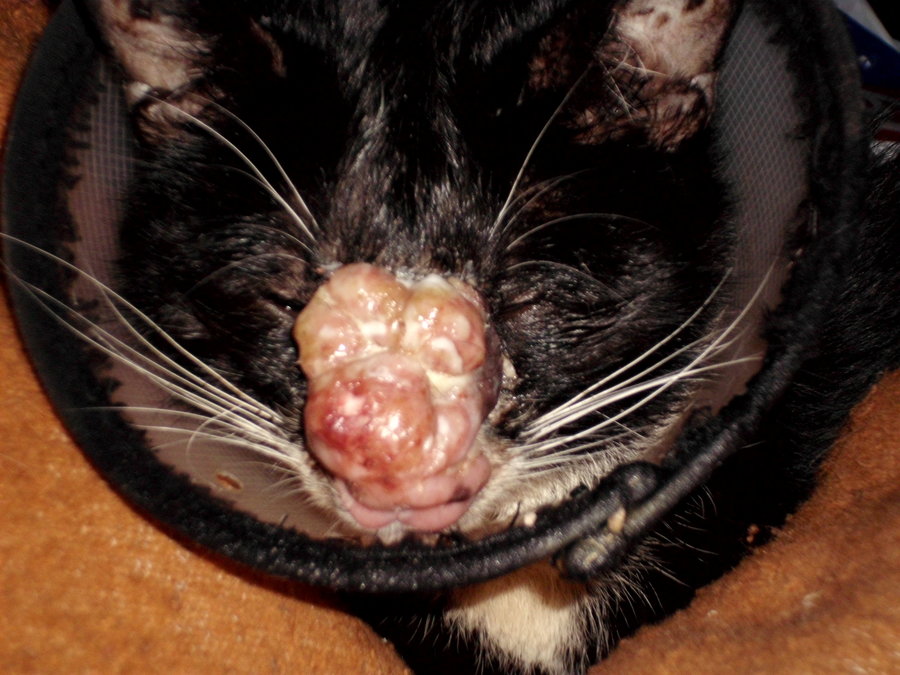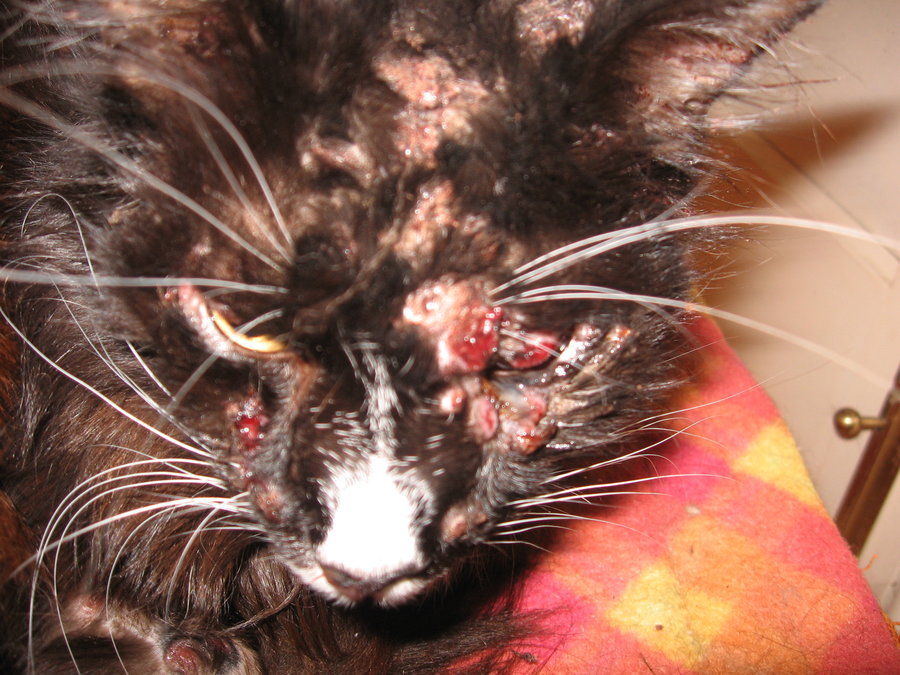Hi,
My cat has had the terrible fungal infection cryptococcus, on his nose, for about 21 months now.
We first tried Itrafungol for six months this did nothing and the lump on his nose grew larger.
He then gained an infection caused by this which Amoxycare attended to.
We're currently using 50mg of Fluconazole. This appears to be keeping it at bay yet not fixing the problem. We've been using it since February.
We also turned to a homeopathic remdy called Thuja. This again did nothing.
It's hard to get him to eat due to his lack of smell and taste caused by the nasal infection.
Below are two pictures.
His eyes aren't effected at the moment, this picture was simply taken with him trying to get to sleep.
Any help is much appreciated.
Thanks.
My cat has had the terrible fungal infection cryptococcus, on his nose, for about 21 months now.
We first tried Itrafungol for six months this did nothing and the lump on his nose grew larger.
He then gained an infection caused by this which Amoxycare attended to.
We're currently using 50mg of Fluconazole. This appears to be keeping it at bay yet not fixing the problem. We've been using it since February.
We also turned to a homeopathic remdy called Thuja. This again did nothing.
It's hard to get him to eat due to his lack of smell and taste caused by the nasal infection.
Below are two pictures.
His eyes aren't effected at the moment, this picture was simply taken with him trying to get to sleep.
Any help is much appreciated.
Thanks.





